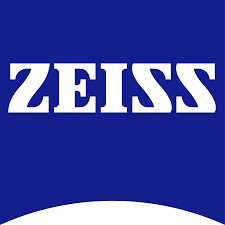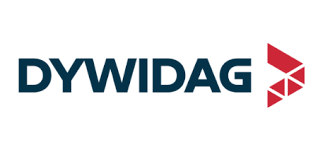Wireless Brain Sensors Market Report
Published Date: 15 December 2025 | Report Code: wireless-brain-sensors
Wireless Brain Sensors Market Size, Share, Industry Trends and Forecast to 2033
This report explores the Wireless Brain Sensors market, offering in-depth insights into market trends, segmentation, and forecasts for the period 2023 to 2033. It aims to provide stakeholders with essential data to make informed decisions in this rapidly evolving domain.
| Metric | Value |
|---|---|
| Study Period | 2023 - 2033 |
| 2023 Market Size | $2.50 Billion |
| CAGR (2023-2033) | 10% |
| 2033 Market Size | $6.71 Billion |
| Top Companies | NeuroSky, Inc., Medtronic , Emotiv, Boston Scientific |
| Last Modified Date | 15 December 2025 |
Wireless Brain Sensors Market Report (2023 - 2033)
Wireless Brain Sensors Market Overview
Customize Wireless Brain Sensors Market Report market research report
- ✔ Get in-depth analysis of Wireless Brain Sensors market size, growth, and forecasts.
- ✔ Understand Wireless Brain Sensors's regional dynamics and industry-specific trends.
- ✔ Identify potential applications, end-user demand, and growth segments in Wireless Brain Sensors
What is the Market Size & CAGR of Wireless Brain Sensors market in 2023?
Wireless Brain Sensors Industry Analysis
Wireless Brain Sensors Market Segmentation and Scope
Tell us your focus area and get a customized research report.
Wireless Brain Sensors Market Analysis Report by Region
Europe Wireless Brain Sensors Market Report:
Europe's Wireless Brain Sensors market is set to grow from USD 0.78 billion in 2023 to USD 2.09 billion in 2033. The growth is driven by increasing healthcare investments, innovative research from academic institutions, and a heightened focus on mental wellness.Asia Pacific Wireless Brain Sensors Market Report:
The Asia Pacific region is experiencing significant growth in the Wireless Brain Sensors market, with an expected market size of USD 1.32 billion by 2033, up from USD 0.49 billion in 2023. The increasing prevalence of neurological disorders and growing healthcare expenditures in countries like China and India are key growth drivers.North America Wireless Brain Sensors Market Report:
North America leads the market, with a projected market size of USD 2.28 billion by 2033, expanding from USD 0.85 billion in 2023. This growth is fueled by high adoption rates of advanced technology in healthcare, extensive research initiatives, and favorable reimbursement policies.South America Wireless Brain Sensors Market Report:
In South America, the market is expected to grow from USD 0.06 billion in 2023 to USD 0.17 billion in 2033. The slow growth is attributed to limited healthcare infrastructure, yet increasing investments in healthcare technology present opportunities for market expansion.Middle East & Africa Wireless Brain Sensors Market Report:
The Middle East and Africa region is projected to expand from USD 0.32 billion in 2023 to USD 0.86 billion in 2033. Growth in this region is supported by enhanced healthcare infrastructure and increasing awareness of mental health issues.Tell us your focus area and get a customized research report.
Wireless Brain Sensors Market Analysis By Technology
Global Wireless Brain Sensors Market, By Technology Market Analysis (2023 - 2033)
The market is bifurcated into non-invasive and invasive technologies, with non-invasive sensors capturing a larger market share due to their ease of use and safety. Non-invasive technology is projected to reach USD 5.43 billion by 2033, while invasive technologies are estimated to grow to USD 1.28 billion. Non-invasive methods are preferred for consumer applications and research purposes, whereas invasive technologies find usage in clinical diagnostics.
Wireless Brain Sensors Market Analysis By Application
Global Wireless Brain Sensors Market, By Application Market Analysis (2023 - 2033)
Key applications include medical research, clinical diagnostics, and consumer wellness. Medical research is expected to dominate with USD 4.11 billion by 2033, while clinical diagnostics follows at USD 1.69 billion. The consumer wellness segment is anticipated to reach USD 0.91 billion, driven by increasing health consciousness.
Wireless Brain Sensors Market Analysis By End User
Global Wireless Brain Sensors Market, By End-User Market Analysis (2023 - 2033)
The market comprises hospitals, academic research institutions, and consumer markets. Hospitals represent the largest segment, anticipated to grow from USD 1.53 billion in 2023 to USD 4.11 billion in 2033. Academic research institutions are projected to increase to USD 1.69 billion, while the consumer market is expected to reach USD 0.91 billion.
Wireless Brain Sensors Market Analysis By Region Substitute
Global Wireless Brain Sensors Market, By Regulatory Compliance Market Analysis (2023 - 2033)
Although regulatory compliance isn't categorized traditionally, it's essential for both market growth and acceptance. The landscape is evolving, with FDA and CE mark approvals driving product introductions, especially for innovative technologies aiming for healthcare integration.
Wireless Brain Sensors Market Analysis By Dynamics
Global Wireless Brain Sensors Market, By Market Dynamics Market Analysis (2023 - 2033)
Market dynamics include drivers such as technological advancements, increasing focus on mental health, and enhanced research funding. However, challenges like data privacy concerns and regulatory hurdles may impact growth, necessitating continuous innovation and stakeholder collaboration.
Wireless Brain Sensors Market Trends and Future Forecast
Tell us your focus area and get a customized research report.
Global Market Leaders and Top Companies in Wireless Brain Sensors Industry
NeuroSky, Inc.:
NeuroSky is known for its consumer-friendly brain sensors and innovative EEG technology, leading advancements in personal health and fitness applications.Medtronic :
Medtronic is a leading medical technology company that develops and manufactures devices utilizing wireless brain sensing technologies for clinical diagnostics.Emotiv:
Emotiv focuses on brain-computer interface technologies, offering wireless brain sensors that cater to both consumers and researchers alike.Boston Scientific:
Boston Scientific is dedicated to advancing neurological devices and therapies, leveraging wireless brain sensors to improve patient outcomes.We're grateful to work with incredible clients.









FAQs
What is the market size of wireless Brain Sensors?
The wireless brain sensors market is projected to reach approximately $2.5 billion by 2033, growing at a CAGR of 10% from its current size in 2023. This growth reflects the increasing demand for advanced neurotechnologies in various sectors.
What are the key market players or companies in the wireless Brain Sensors industry?
Key players in the wireless brain sensors market include technology giants and innovative startups in neurology and medical devices. These companies are focused on research and development to enhance the capabilities and applications of brain-sensing technologies.
What are the primary factors driving the growth in the wireless Brain Sensors industry?
The growth of the wireless brain sensors market is driven by rising healthcare needs, advancements in neurotechnology, increased investment in medical research, and the growing demand for non-invasive monitoring solutions for neurological conditions.
Which region is the fastest Growing in the wireless Brain Sensors?
The fastest-growing region in the wireless brain sensors market is North America, with a projected size increase from $0.85 billion in 2023 to $2.28 billion by 2033. Significant investments in healthcare and technology advancements contribute to this growth.
Does ConsaInsights provide customized market report data for the wireless Brain Sensors industry?
Yes, ConsaInsights offers customized market report data tailored to specific needs within the wireless brain sensors industry. Clients can receive insights that focus on particular segments, geographical areas, or emerging technologies.
What deliverables can I expect from this wireless Brain Sensors market research project?
Key deliverables from the wireless brain sensors market research project include detailed market analysis, segment breakdowns, regional insights, competitive landscape assessment, and strategic recommendations tailored for stakeholders in the industry.
What are the market trends of wireless Brain Sensors?
Current trends in the wireless brain sensors market include advancements in non-invasive technologies, a focus on consumer wellness applications, increased FDA approvals for innovative devices, and a growing emphasis on integrating technology with clinical diagnostics.
